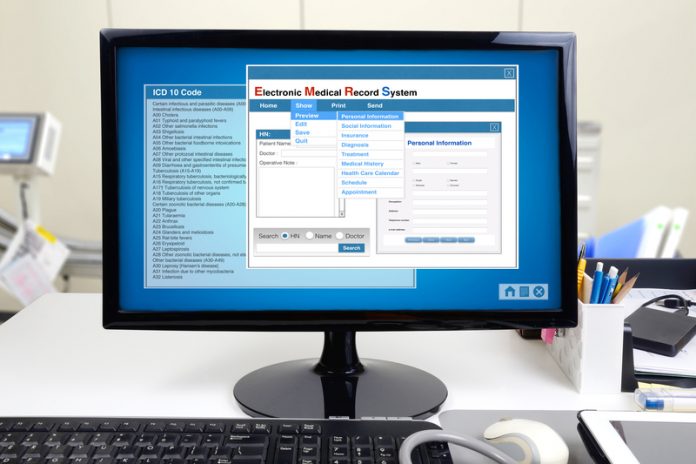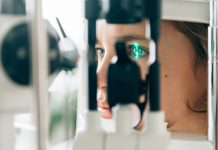Jean Michel LeTennier, CEO, Atomic Information Systems Corp talks about global electronic health records and explains the challenges of these systems…
What has become painfully clear to every Patient, Doctor, Manager, Insurance company and government official around the world, is that the EHR (Electronic Health Record) systems in use today are basically “Broken”. This is the results of decades of essays to take advantage of the accompanying computer age, in a concerted effort to augment, improve, and extend quality medical care to the global population. The problem as a result is the misalignment of foundational, security, communications and integrational technologies. Political infighting, as well as commercial self-interests, have contributed extensively as well. When one considers the legal compliance, reporting, and regulatory environment of today, it’s easy to see why matters are deteriorating. We will attempt to review some hard learned experiences and explore new concepts so that it is possible to both alleviate and resolve these issues here.
The Broken nature of these systems extends to the financial arena, especially the continual reduction of available patient services, not to mention exposure to thousands of fraudulent schemes of one sort or another. One of the most intriguing, if not completely arcane magical parts of the EHR world is the coordination of insurance medical codes and corresponding performed medical services, in order for payments to actually occur. Entire organisations exist simply to proffer new requirements and codes each successive year, and new industries are forming around them. This situation is and has continued to create increasingly expensive options for patients, and patient care.
The core of these difficulties lies in the foundational data management & computer science that is in use today. EHR, like any other application is simply that, an “application”, and it depends on a database solution from a selected vendor (Oracle, Microsoft m IBM etc.). These database technologies have an inherent flaw, they completely fail to communicate and interoperate with each other, even from the same vendor. The one common feature they inherit is that they are known as “relational” database technology, dating back to 1971. The very nature of the complexity of EHR necessitates a far more flexible and dynamic approach than made available by “relational” technology.
Today Atomic Information Systems is introducing an “old” new data management solution known as “Associative” technology. We say “old “ simply because the technology known as “Associative” information management was first imagined and created in the early 1960s and was clearly seen as the future of data management, but due to the disparity of available hardware and the hardware requirements at the time, the potential was never fully realised. At its core “Associative” data technology is essentially “object oriented” data management, the long sought Holy Grail of computer science. The object oriented approach to application development is the one reason, unlimited complexity is viable and available, and by extending this to the database layer we resolve relatively all of the issues surrounding EHRs today, and make available new services and research capabilities.
The very nature of migrating from one EHR system to another is itself a tragically difficult and expensive proposition, so many medical institutions continue to stay tied to relatively ancient solutions or attempt to integrate new modules or technologies into the old, further raising costs. What is being proposed is a singular co-existing approach, allowing for, what amounts to a universal medical data warehouse that operates in concert with existing disparate systems. This approach allows for the continued use of existing EHR systems, no matter how many, while enabling the use of new capabilities with a minimum of upgrade costs and training, furthermore, migration costs are nearly eliminated.
Current EHR challenges
The existing EHR provider applications (totalling about 900) and all delivery systems have the following critical issues and serious problems:
- Physicians, hospitals and other healthcare workers complain that the applications are limited in reporting the overall condition of patients and cannot accommodate what all healthcare workers see, hear, feel and sense what is going on with their patients, the history of all ailments and how diagnoses are influenced by other conditions and medications. These are categorised as EHR application operational problems;
- Physicians complain that the applications are time consuming, cannot be matched against prior ailments and older visits and take valuable time away from patient care;
- The intraoperative capabilities are non-existent;
- There are documentation, privacy and security failures that lead to compliance concerns;
- Patients cannot see and review their health files, nor request that they be sent to other physicians, clinics or hospitals;
- Death and maiming is continuing to occur at alarming rates;
- Loopholes have driven costs to unheard of levels because of unneeded and unwarranted tests and procedures by hospitals;
- The single major problem with all EHRs is interoperability.
UNIEHR & AtomicDB
We believe that UNIEHR (Medical Record System) brings significant additional value to the entire data centre ecosystem far beyond traditional value proposition. The global UNIEHR community works together to build the world’s leading open source enterprise electronic medical record system platform.
AIS Corp. will be integrating AtomicDB with UNIEHR. The global UNIEHR community works together to build the world’s leading open source enterprise electronic medical record system platform. Its mission is to contribute to the improvement of health care delivery and the health of communities.
This would allow seamless integration of multiple data systems into an EHR practice access system accessible instantly by many different medical professionals & medical groups.
The UNIEHR Universal EHR Solution offers a range of intelligent solutions and services that support the clinical, financial needs of organisations of all sizes, including hospitals, physician practices, laboratories, ambulatory centres, behavioural health centres, cardiac facilities, radiology clinics, surgery centres, extended care facilities, retail pharmacies, and employer sites.
One of the very powerful yet simple concepts to be introduced will be the Horizontal Screen Navigation capability. One of the more aggravating operational problems most doctors face is the endless switching between different screens in a vertical manner. Our new design will allows caregiver to have a ‘birdseye’ view of all the screens simultaneously.
UNIEHR & AtomicDB Architecture
With the integration of AtomicDB into UNIEHR, we will be able to offer a totally secure solution allowing for the evaluations, correlation and analysis of all potential effects on the patients as well as monitoring cost and performance metrics on the fly. The truly amazing thing here, is the system is completely and totally customisable on the fly, as well and can integrate with any known systems including outside security systems, network, management, order and delivery schedules, human resources, accounting, billing, insurance correlation, payments taxes and even the dramatic justification and simplification of research grant and or construction grants.
Jean Michel LeTennier
CEO
Atomic Information Systems Corp
jm@aisys.us
Please note: this is a commercial profile













